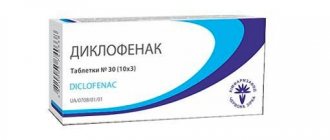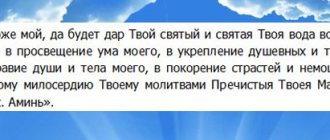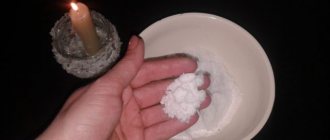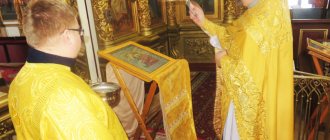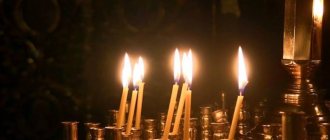At the end of the Liturgy, prosphora and antidor are distributed to all those praying in the church - small parts of the large prosphora from which the Holy Lamb was taken out at the proskomedia. Baking prosphora is by no means simple cooking: it is a task done in a special way and certainly with prayer. People who come to work usually see only its results. To find out all the secrets of the process itself, our correspondent went to the prosphora of the Holy Trinity Cathedral in Saratov.
The senior prosphora student, Galina Pavlovna Kartazaeva, has been working here for nine years.
A process engineer by training, she never thought that her job would ever be related to baking bread. “I used to work in my specialty at a factory,” says Galina Pavlovna. — In the early 90s I came to faith and over time I realized that I wanted to be closer to the Church. I was thinking about getting a job as a candle maker in the Trinity Cathedral, and turned to the rector - Abbot Pachomius (now the Bishop of Pokrovsky and Nikolaevsky - Ed.). He said that a person was needed in the prosphora department, and blessed me to go there. Although this obedience was completely new to me, I took on it with joy.
The prosphora of the Trinity Cathedral serves 33 churches. These are mainly churches in the regional center and Saratov region. There are four more prosphora in Saratov - at the Church of the Nativity of the Virgin Mary, in the Intercession, Kazan and Spiritual Churches.
“Their production volume is much smaller,” explains Galina Pavlovna. — The main burden is on our temple. We do not refuse anyone, no matter which priest from which church asks, we try to fulfill his request.
The main assistant in mastering a new profession for Galina Pavlovna was the book by Deacon Oleg Starkov “Take, eat: this is My Body, which is broken for you...” - a textbook for everyone who wants to learn how to bake prosphora for the Divine Liturgy.
— The book describes the whole process. But the most important thing is, of course, practice. It's one thing to read, another to do. I tried to organize the work strictly in accordance with what was written in the book, but each prosphora still has its own subtleties. We produce a large volume - this is one technology, someone bakes less prosphora or, conversely, many times more - everything will be a little different there. In my work, I try to take into account two factors - firstly, high-quality products, and secondly, the normal employment of people, that is, we need to structure the process so that they do not get too tired, because the work is very hard.
Along with Galina Pavlovna, there are four more people on the prosforni staff. They work three days a week - on Tuesday and Wednesday they bake service prosphora (700-800 pieces), and on Thursday - small prosphora (6-7 thousand in one day). It is difficult to make a large, service prosphora - this is the job of professionals, but a small one - on the contrary, it is simple. Therefore, every Thursday parishioners of Saratov churches come to the aid of prosphora workers.
The working day in prosphora begins at eight in the morning. One of the workers comes at seven and puts the dough in the dough mixer.
“Lean dough - flour, water, yeast and salt,” says Galina Pavlovna. — Flour gluten is of great importance for the quality of the dough. It is difficult to find flour of the required characteristics, so we try to use the same one - “Aleika”. But even with it it turns out differently every time, although it seems like we put the same dough every day.
Before starting work - general prayer. Workers pray to Saints Spyridon and Nikodim, prosphora bearers of Pechersk.
After an hour or twenty, the dough is ready, and the process itself can begin. Today we will bake service prosphora. Andrey, one of the prosphora workers, rolls a layer of dough on a roller. Externally, the rollers resemble a roller: two rollers rotating in opposite directions capture and process the dough passing between them. The resulting cake should be elastic, for this Andrey rolls the dough about twenty times. The more elastic the cake, the easier it is to form the prosphora later.
“When I came to the prosphora clinic, women were doing this operation,” recalls Galina Pavlovna. “But physically it’s very difficult, not every man can handle it.” In addition, you need speed: the faster the dough layer is scrolled, the better it will turn out.
The first cake is ready, and Andrey carefully lays it out on the table. Four women use a special shape to cut out circles from it - like those we usually cut out with a glass when we make dumplings at home. These are blanks for the lower part of the prosphora. The workers form balls from them and begin to twist them.
If you look from the outside, it couldn’t be simpler. You roll the lump of dough on the table until it turns into an even, smooth ball. But if you twist for too long, the prosphora will turn out pockmarked, like an orange, and this should not be allowed. And if you don’t tighten it enough, it will fall apart and be ugly.
I'll try it myself. I formed a ball, but it didn’t want to spin around under my hand! With two hands - and then barely. The dough is very dense - to roll it through, you need not only skill, but also strength.
“No one succeeds right away,” Galina Pavlovna smiles. - This takes time, and not a couple of days, but months. This confused me at first. I wanted to learn faster, but it didn’t work out. My colleagues encouraged me, I tried my best. When you try, ask God, then everything always works out. That's how I learned. At first I did it slowly, only one or two for a whole baking sheet, but then I gained more experience and was already on par with everyone else. Our hands, of course, get very tired, but we’re used to it and don’t notice.
When rolling the prosphora, no flour is used. The prosphora makers only have a cup of water on the table to smooth out any unevenness on the bottom surface. The women work quickly so that the dough does not overcook. In 5 minutes you need to make 15 pieces - that’s exactly how much fits on one baking sheet. Then the baking sheet is covered with cellophane and put into a proofer - a special chamber where the products will be suitable. It takes them one hour and forty minutes to stand there.
In the meantime, layers for the upper part are being prepared. It’s easier for women with it - they simply use the same round shape to cut “pancakes”. The baking sheet with such preparations is sent to the next table - to Vladimir. Now he will put stamps on them. Seals for prosphora are like regular office stamps, only larger. They come in wood and metal and are produced in Sofrino.
Vladimir kneads the dough a little and rolls it in flour so that the seal does not stick. “Well, now he’ll just stamp everything in the middle, and it’s done,” I think. No! The prosphora maker places the seal on the workpiece so that it completely covers it and begins to twist. This is done to ensure that the printing on the dough is clear and uniform. And you need to hold it tightly, otherwise the print will be blurry, weaken, or simply move. Physical strength is also needed here, so it is not surprising that this seemingly simple operation is performed by a man.
“I’ve been on prosphora for a long time,” says Vladimir. “At first I just came, but now I started working all the time.” I don’t even know why I work here: probably the Lord brought me. The work is collective, everyone has their own area, but if anything happens, we can replace each other. For everything to work out well, you need to concentrate and even mentally not be distracted by anything. This is basically the same as in any job.
For a cross prosphora, you need a seal with an image of a cross in the center, and in the corners - the initial letters of the name of Christ the Savior IC-XC and the Greek word NI-KA. It means "Jesus Christ conquers." On the seal for the Mother of God prosphora there is the Star of Bethlehem and the inscription: “Mary.”
The first batch is already ready, all three baking sheets are in the proofing pan. One batch usually results in five batches. Two batches of 16 or 20 kilograms of flour are made per day. You need to form the prosphora very quickly so that the dough does not overcook.
Galina Pavlovna looks into the proofing area. Ready - ready to bake. But before that you need to connect the lower part with the upper. The older prosphora maker lubricates the lower part with water, carefully places the upper part, presses it slightly, and makes punctures with a long thin wire. The punctures are needed so that air can pass through them; without this, the prosphora will burst.
First, the prosphora is placed in the oven at 280 degrees. After two minutes they take it out and make punctures again. So - two or three times. When the prosphora holds well and tightly, they will be sent to finish baking at 150 degrees. There are just four compartments in the oven - one is heated to 280 degrees and three to 150.
Today, the regular staff of the prosphora is assisted by parishioners Lydia and Lyudmila. Lydia is also from the Trinity Cathedral, and Lyudmila is from the Church of All Saints who shone in the Russian land. They have been in the prosphora for a long time, and when one of the employees goes on vacation or more prosphoras need to be produced (as a rule, this happens before major holidays), they are called to help.
“Despite the traffic jams, their state of health, their advanced age, they still come,” Galina Pavlovna says about them with gratitude. - Responsible, they want to serve God. Mostly pensioners help us. But there are also young guys, many of them work in shifts at their main jobs. They will work their shift and if they have a free day on Thursday, when the small prosphora is being baked, they will come to us. Lida and Luda have been working for a long time, they know everything, we can’t trust any of our assistants with the official prosphora anymore. There are special requirements for it: it must be dense, without air spaces, and it is a little difficult to bake. And a small one, please! Even a beginner can easily cope with it, so the more people who come to us on Thursdays, the better. Everyone is welcome and grateful. We'll show you everything, explain everything.
While Galina Pavlovna is busy baking, the rest of the prosphora bakers are already working on the next batch. The process continues continuously, like on an assembly line. Until all the dough is processed, you can’t go anywhere.
It would seem that the work is quiet, measured (only occasionally the dough mixer hums) - this is the time for calm conversations, stories about household chores and concerns, you can even talk in secret. But there is silence in the prosphora. Why? The team was friendly, after all, after so many years together they have probably become a second family to each other.
“We try to talk only to the point,” explains Galina Pavlovna. “If a conversation suddenly starts, I interrupt it and tell the sisters that they need to pray.” We are doing God’s work, and we must do it with reverence. Why empty talk? I usually recite the Jesus Prayer to myself. We also have a tape recorder - we listen to the holy fathers, record the conversations of the priests, which are broadcast on Soyuz, and then turn them on here. For the big holiday we teach troparia and sing together. All this is useful for our spiritual education, it helps us tune in to the right mood, and a different state immediately arises.
The smell of fresh bread is already wafting from the oven. Ready! The senior prosphora maker takes out the baked goods, puts them in large wooden boxes lined with fabric, covers them with cotton cloth and another cellophane on top.
“It’ll cool down and I’ll take it apart in the morning.” Place in cloth bags which temple ordered how many. On Friday the priests will come to pick up the prosphora. Usually each temple borrows for a week, and they start distributing it on Saturday. For litia, they also order bread - these are small buns, made like the lower parts of service prosphoras.
Prosphora are consecrated during the celebration of proskomedia - the first part of the Liturgy. For proskomedia, five prosphoras are used in memory of the Lord’s miraculous feeding of more than five thousand people with five loaves. Actually, for Communion one prosphora is needed, according to the words of the apostle: There is one bread, and we, many, are one body; for we all partake of one bread (1 Cor. 10:17 ). From this prosphora the clergyman cuts out the Holy Lamb - the middle quadrangular part. At the same time, words are pronounced from the prophecy of the Old Testament prophet Isaiah: Like a sheep led to the slaughter, and like a lamb without blemish, the one who shears it is speechless, so he does not open his mouth; in humility His judgment will be taken; Who will confess His generation? as if His belly were lifted up from the earth (Isa. 53 :7-8).
The second prosphora is called the Mother of God; one particle is taken out of it in honor of the Mother of God. The third prosphora is nine-ranked, in honor of all the saints, whose faces consist of nine ranks. Nine particles are taken out of it in honor of John the Baptist, the prophets, apostles, saints, martyrs, saints, unmercenaries, Godfather Joachim and Anna, and the saint in whose name the Liturgy is celebrated. From the fourth prosphora, particles are taken out for the living, from the fifth - for the dead.
Prosphora can be stored for a long time: if the necessary conditions are met, three to four weeks. To do this, they are placed in a canvas bag, and then in a plastic bag, tied tightly so that air does not pass through, and put in the refrigerator. Then it won’t dry out and won’t mold.
Galina Pavlovna rubs the vacated hot baking sheets with wax.
— We don’t use butter when baking. Only wax. I rub it with a clean napkin and leave it to dry. If you do not grate, the prosphora will stick to the baking sheet. Because of this simple procedure, the smell of our prosphora is so tasty, as if we were baking not from lean dough, but from butter dough - with butter and sugar.
The hardest time for prosphora makers is before Easter. The volumes are very large; we have to work from 7 am to 10 pm.
“For Easter we also bake artos, they weigh 3–3.5 kilograms and bake for four hours. This year we baked 90 artos. Other prosphorni, for comparison, are baked in 10 pieces. This is the difference in volumes. But we, of course, do not complain.
Despite the serious workload, Galina Pavlovna likes this work.
“Although it’s complicated and difficult, sometimes it even takes me into despair, but I still like it here.
Meaning of the word
First, let’s find out more precisely, prosphora - what is it? The word itself has ancient Greek roots and is translated as “offering.” Its second name is bread for the liturgy, liturgical. The main purpose is to use it during the Eucharist for consecration and consumption together with wine as a particle of the body and blood of Christ. Prosphora is also widely used for the Proskomedia ritual. What does this mean: during a special liturgy, the birth and death of Christ are remembered, and all Christians, living and dead, are remembered. The basis of the ritual, in addition to the words of Jesus spoken at the Last Supper, is also the miracle when He fed thousands of hungry people with several loaves of bread. But long before the Nativity of Christ, sacrificial prosphora was mentioned in the Old Testament texts. What kind of bread it was supposed to be was stated directly: leavened, that is, yeast. This is written about in the Book of Leviticus. In the Mosaic tabernacles (camp temple), sacred bread was also used, only unleavened, prepared in a special way. Its two parts signify the human, earthly beginning and the higher, heavenly one.
Ancient cult
During the time of the first Christians, believers brought food, olive oil, and wax for candles to churches or houses of worship, which were necessary for liturgies and other rituals or simply services. Prosphora was also obligatory. That this was not ordinary bread, but special, symbolic, is confirmed by such facts as, for example, the description of common meals - agapes. At the dawn of Christianity, during the era of slavery, it was customary for all members of local churches to gather to eat food together. Free citizens and slaves sat at the same table. The agapes played the role of the Last Supper, during which the Eucharist was celebrated, so the meals were strictly religious in nature. At the same time, they emphasized that in the face of Christ everyone is equal, regardless of social status. Those gathered kissed the world, prayed, and sent messages to other similar churches and communities. Later, when such “evenings” began to be held separately from the Liturgies, prosphora was not called the food brought in general, but only the bread needed for the Eucharists.
The taste of bread
How are prosphora prepared? The recipe may be different, but the technology is the same for everyone. It is necessary to take exactly wheat flour, salt, water, alum or yeast. Prosphora does not require any fat additives - milk, whey, butter. And its taste should just be slightly salty. Special symbolic images on religious themes are applied to the top crust of the bread. Prosphora consists of two parts - halves, as described above. Their sacred meaning indicates the connection between the human and the Lord's worlds. Flour, bread and salt are associated with the Holy Trinity, and alum with the life of the spirit. Saint Simeon of Thessalonica also draws the following analogy: flour and leaven (dough) are the soul, water is its baptism, and salt is the great word of God. Jesus called his disciples “salt.” And the baking process is compared to the union of the Lord with us, people, “human nature.” Therefore, blossomed bread that has become moldy is not suitable for the role of prosphora.
How can you bake prosphora? The recipe, which was used in the old days, contains the following instructions: kneading the dough is done with the addition of holy water, baking is accompanied by prayers and the singing of psalms, the work is performed by pious women specially invited for this purpose. They are called prosphora bowls. The process goes as follows. For one batch of baking, 1200 g of semolina flour is required. Sow it carefully so that it is fluffy and filled with air. Pour a little blessed water into the basin where you are going to knead the dough. Then pour out about 400 g of flour and pour boiling water over it. Why is this done: firstly, so that the wheat gives the dough the sweetness it contains, since sugar is not added to such bread. Secondly, so that the prosphora does not mold for a long time. The mixture needs to be mixed and left to cool slightly. Next, salt (several tablespoons) is diluted in holy water, this is poured into the flour mixture, 25 g of yeast is added, they are dissolved and kneaded thoroughly. Now cover the basin and leave the dough for half an hour to rise. Add the remaining flour, knead again and let the dough rise again. After the specified time, if the mass has risen well, it should make an excellent prosphora. What to do with it - read on.
How to bake?
Throughout the Orthodox world, prosphora has been baked with prayer since ancient times. And only the prosphora students themselves know how hard and responsible work this is. The responsibility is only aggravated by the fact that prosphora is liturgical bread. And this requires that it be prepared in the best possible way.
In monasteries, the reverent and prayerful attitude towards prosphora never ceased. This process began to be equated with real church art.
And here, too, you need to know what kind of flour the prosphora is made from, and what kind of yeast it should be. If we talk about American flour, then to achieve a snow-white color it is often bleached with chlorine, and in fact it is not suitable for baking prosphora.
Many housewives like to use French yeast, but they are also not suitable for baking, since when fermenting they immediately produce a lot of carbon dioxide, and for baking a large batch of prosphoras at the same time this is a disaster. After all, it will be impossible to keep track of the dough - the yeast will “run away”. Therefore, it is best to use our domestic yeast.
Baking products
Place the dough on the work surface, dusting it well with flour. Roll out the layer 3 cm thick. Cut it into circles of larger and smaller diameter using special molds. Correct them with your hands so that each future prosphora turns out neat. What to do with her now, or rather, with them? Cover with a damp waffle towel, dry on top, and leave again for half an hour to “rest.” Then apply stamps to the smaller circles and connect them to the larger ones, after lightly moistening the surfaces with water. To prevent voids from forming in the dough during baking, each holy prosphora must be pierced through. Then transfer them to a floured baking sheet and place in a preheated oven. How to bake prosphora? They should brown but not burn. Time - from 15 to 20 minutes. Place the finished baked goods on the table, cover with dry, wet and dry towels and something warm. In this form, the prosphora should cool down. They are placed in special baskets and used for their intended purpose. Store in the refrigerator.
Prosphora
Therefore, prosphora became an integral part of church liturgical life. And since the Church cannot exist without the Liturgy, such obedience as baking prosphora has special significance. Then I wonder how this was accepted in Rus'?
In ancient times, everyone could bake prosphora, as it was considered an offering to the temple. The best were selected from these offerings, and the Divine Liturgy was served on them. At that time, almost all housewives knew how to bake bread. Being churchgoers, they knew that to bake prosphora you needed leaven, salt, water and flour. Any housewife could bake prosphora at home and bring it to the temple.
In Greece, for example, today you can buy it in a store and bring it to the temple as an offering.
Living Prayer Word
As already noted, the entire process of working with the dough is accompanied by prayer. Prosphora is holy bread, but every matter is in dispute with God. The first prayer, traditional for any undertaking: “Lord, help!” It precedes the start of work. During the kneading, five prayers should be read, appeals to Saints Spyridon, Nicodemus and Prokhor, as well as to the Lord. When the prosphora is pierced, the action is accompanied by the traditional: “In the name of the Father, the Son...” While baking is in progress, one should read: “To the Virgin Mary...” The work ends with a grateful appeal to God. There is also a prayer for accepting the prosphora.
The matter with prayer
It is believed that prayer comes first, and then everything else. The novices begin to bake prosphora with prayer before starting any good deed and call for help the venerable prosphora makers Nikodim and Spiridon, whose relics rest in the Lavra caves. And the monastery brethren add to them the Jesus Prayer, prayers to the Most Holy Theotokos, all the reverend Fathers of Pechersk and all the saints.
The process continues with the dough being taken out of the trough and placed in the machine, where everything is well kneaded and rolled out. It is very important that the dough is stiff and that no air bubbles form in it. Otherwise, the prosphora will become distorted and may begin to crumble, and in large service prosphora, voids may appear when cut, but this should not be allowed.
Sacred Seal
A special design is applied to the top of the holy bread - a “seal”. How does she look? The outlines of a cross are drawn - four-pointed, equilateral. Above the crossbar are carved the initials of Christ - IC XC, and below it - the word "victory" in ancient Greek: nika. Naturally, doing all this by hand takes too long, especially if you need to bake a large number of products. A seal for prosphora will serve you well. You can buy one in church shops. The impressions she made are clearly visible on the test. And when the prosphora is already baked, the design looks beautiful on the browned crust.
sacrificial lamb
It should be noted that during worship, not the whole bread is used, but its particles. “With a spear” (in memory of how Christ’s heart was pierced with this weapon on the cross), the prosphora is divided into pieces that signify the Lamb of God, the sacrifice made by Jesus for the sake of people. Usually 5 loaves of bread are baked for Proskomedia. One is used as the Lamb and is given communion to the faithful during the liturgy. The rest are divided by the priest in memory of the Mother of God. They eat particles of these prosphoras, remembering her, the holy martyrs, and the compilers of the liturgy. But this number is aimed specifically at the official part of the service. For the needs of the church and parish, as many prosphoras are baked as parishioners submit notes “To health” and “To repose.”
Proper Use of the Holy Bread
As a rule, parishioners try to bring home pieces of prosphora from church so that everyone in the family can receive communion. But its use is regulated by several rules. Firstly, they eat such bread before the main meal, without mixing them in any way. Secondly, be sure to pray before putting a piece in your mouth. So, when you return from the liturgy, lay a clean tablecloth on the table. Place the prosphora on a plate. Pour a little holy water into glasses or cups - about 3 sips. Then the eldest in the family must read the very prayer that is intended for receiving the holy bread. It begins like this: “Lord my God, may Your holy gift, Your holy water, be an obstacle to my sins, enlighten my mind, strengthen the strength of spirit and flesh...” After reading these cherished words, you need to offer a plate to each member of your household. He must carefully, so that not a crumb falls on the floor, put the particle in his mouth, chew it slowly, and wash it down with blessed water. At this moment, of course, it is advisable to think not about worldly vanity, but about the Lord, Jesus, the Holy Church, feeling like a member of it. After all, prosphora is the bread of heaven, you need to accept it humbly and in fear of God. Georgy Zadonsky also preached that eating it and drinking it with holy water encourages good deeds, protects a person from bad thoughts and actions, from the temptations of the unclean and other filth.
This is the interesting history of the prosphora - Orthodox and Catholic.
Prosphora is prepared from the best wheat flour, mixed with clean water with the addition of salt, yeast leaven and holy water, and is baked with the recitation of the Jesus Prayer by women prosphora makers of pious life.
Prosphora in the Russian Orthodox Church, following the example of the first Christians, is baked from leavened dough. “Leave bread is bread, as if animated through kvass and truly perfect... It shows that the Word of God, completely for our sake, took on our flesh; It became incarnate without changing Its nature, and with a verbal and intellectual soul it took on humanity; was perfect God and perfect Man, and he will recreate me all... There are three substances in leavened bread, because our soul is tripartite and in honor of the Trinity. Flour and leaven mean the soul, water means baptism, and salt signifies the mind and teaching of the Word, Who said to the disciples: “You are the salt of the earth” (Simeon of Thessaloniki).
Flour, water and salt, united by fire, mean that God is completely united with us and gives us His help and assistance, and especially that He is completely united with our entire nature.
You should not eat completely stale or moldy prosphora. For the Lamb, it is more convenient to take a slightly hardened prosphora (baked the day before) than a freshly baked one, since it is easier to cut out the Holy Lamb from the former and, after consecration, it is more convenient to crush it into particles for the communion of the laity.
An ancient recipe for baking prosphora
Take 1200 g of premium flour (cereal). Pour a little holy water into the bottom of the bowl in which the dough will be kneaded, pour in 400 g of flour, pour boiling water over it (to give the prosphora sweetness and resistance to mold) and mix. After cooling, add salt diluted in holy water to the same bowl and add yeast (25 g). Mix everything thoroughly and after rising (after 30 minutes) add the remaining flour (800 g) and knead everything again. After rising (after 30 minutes), the dough is laid out on the table, rubbed well, rolled out with a rolling pin into sheets of the required thickness, cut into circles (for the lower part, a larger shape), straightened with your hands, covered with a damp towel, then dry and kept for 30 minutes. The smaller, upper part is stamped. The connecting surfaces of the prosphora are moistened with warm water, the upper part is placed on the lower part, and both parts are pierced with a needle to prevent the formation of voids. Then the prosphoras are placed on a baking sheet and baked in the oven until cooked (small ones - 15 minutes, service ones - 20 minutes).
The finished prosphora is taken out onto the table, covered with a dry cloth, then a wet one, again dry, and on top of it a clean blanket specially prepared for this purpose.
The prosphora “rest” for an hour. When they become soft and cool, they are put into baskets or other containers, where nothing else except prosphora is placed. How to bake prosphora at home: recipe
Usually, prosphora is not baked at home for the Feast of the Annunciation. This is done by nuns and novices in monasteries, or by mothers in parishes. However, if you wish and always with the blessing of the priest, you can help the parish and take part in preparing the prosphora yourself. Below is one of the simplest recipes.
To prepare prosphoras, you need to have several unusual devices: a stick for punctures, molds for squeezing out large and small prosphoras (in pairs with a difference in diameter of 5 mm), seals.
Recipe for prosphora dough
The recipe is based on 1.2 kg of flour. Take 400 g of flour, pour it into the bottom of the mixing container, pour in holy water, and then pour boiling water over it. This way the prosphora becomes stronger and does not grow moldy for a long time.
When the dough reaches room temperature, add salt diluted in holy water and yeast (25 g). Mix everything, cover and leave for 20 minutes. Then add all the flour and mix. Wait another 30 minutes (in a warm place without drafts).
Then the dough is rolled out into layers of the required thickness, cut into circles, covered with a damp towel and left to proof for half an hour. A stamp is placed on the top. Then I put the lower and upper parts together, they are pierced together several times. The prosphora is placed in the oven and kept there until ready over low heat for about 15-20 minutes (it all depends on the size of the product).
The finished prosphora is laid out from the oven on the table, covered with a dry towel, then a wet one, and on top with a special blanket.
Prosphoras cost 1 hour. When they become soft and cool, they are placed in baskets specially designed for this purpose.
Signs with prosphora for the day of the Annunciation
In order for the year to be calm and successful, for good health, for a prosperous family, it was necessary to eat the prosphora consecrated in the church. It was baked for each family member or bought, then crumbled and eaten. Often the crumbs of this church bread were mixed with seeds to obtain a better harvest, and mixed into the feed of livestock and birds. Even for bees, they mixed it with honey and fed their apiary. The peasants believed that this would bring health to all living creatures.
Flour, water and salt, united by fire, mean that God has completely united with us and is giving us His help.
Flour with leaven means
SOUL
Water -
BAPTISM
Salt marks
MIND and TEACHING
.
The words that were spoken to the disciples: # YOU ARE THE SALT OF THE EARTH #.
Products for prosphora
Now let’s get closer to what products are used for prosphora, and in what proportions. Only the highest grade quality flour is used here. Only fresh yeast is used.
And now we begin the recipe for preparing God's bread.
First you need to prepare a solution of salt and yeast, which is made in the following proportion: for 100 kg of flour - 10 liters of water, 1 kg 700 g of salt and 500 g of yeast. Add 4.5 buckets of water to this mixture. This should yield 3,750 prosphoras.
It should be noted that Lavra prosphora is very tasty. The biggest secret to making them is prayer, hard work and care, and making sure they are all cooked well.
ANCIENT METHOD OF BAKING
Take 1200 g of premium flour (cereal).
Pour a little holy water into the bottom of the bowl in which the dough will be kneaded, pour in 400 g of flour, pour boiling water over it (to give the prosphora sweetness and resistance to mold) and mix.
After cooling, add salt diluted in holy water and 25 g of yeast. Mix everything thoroughly and after rising, after 30 minutes, add the remaining 800 g of flour and knead everything again.
After 30 minutes, the dough is laid out on the table, rubbed well, rolled out with a rolling pin into sheets of the required thickness, cut into circles (for the lower part, a larger mold), covered with a damp towel, then dry and kept for 30 minutes.
The connecting surfaces of the prosphora are moistened with warm water, the upper part is placed on the lower part, and both parts are pierced with a needle to prevent the formation of voids.
Then the prosphoras are placed on a baking sheet and baked in the oven until cooked (small ones - 15 minutes, service ones - 20 minutes).
The finished prosphora is taken out onto the table, covered with dry cloth, then wet, then dry again. The prosphora “rest” for an hour.
The prosphora is made round as a sign of the eternity of Christ and humanity in Christ, in general as a sign that man was created for eternal life.
How prosphora is baked in monasteries
Using the example of the Kiev Pechersk Lavra, I would like to tell how the main Lavra prosphora bearer with the brethren and novices, after praying, at half past four in the morning begins to knead the dough for the prosphora. It’s hard to imagine that 7,500 prosphoras were prepared at one time.
They are baked three to four times a week. On holidays, the number of prosphoras increases. And of course, it is not possible to perform this process manually, so the brethren use technology.
Premium flour is poured into a special dough mixer, followed by water with yeast and salt. In the monastery, water is delivered from the springs of St. Anthony and Theodosius of Pechersk.
In five minutes the machine makes a batch, of which there are only three. The kneaded dough is placed in a wooden trough and left there until three o'clock in the morning. This is done so that it can sour and increase in volume.
